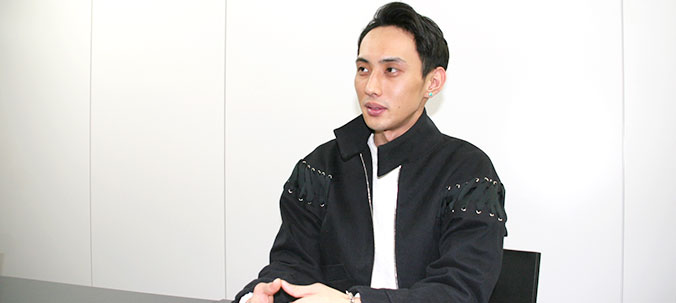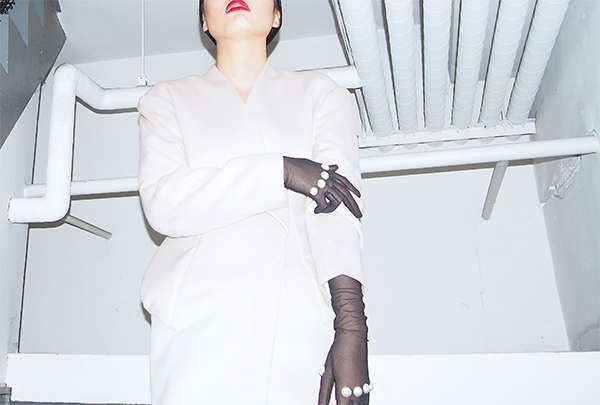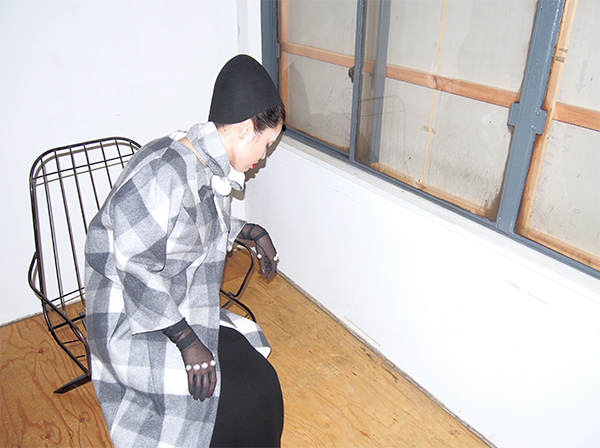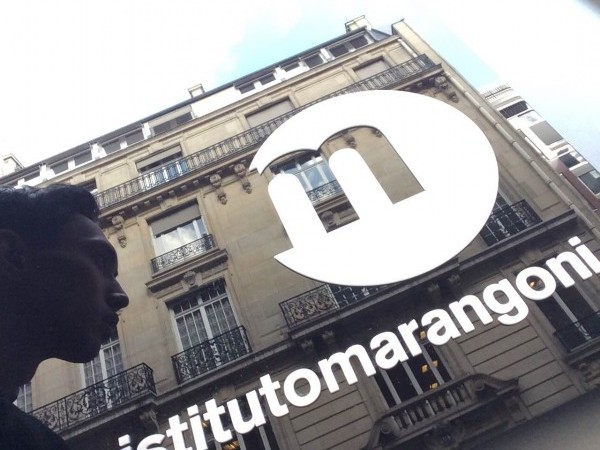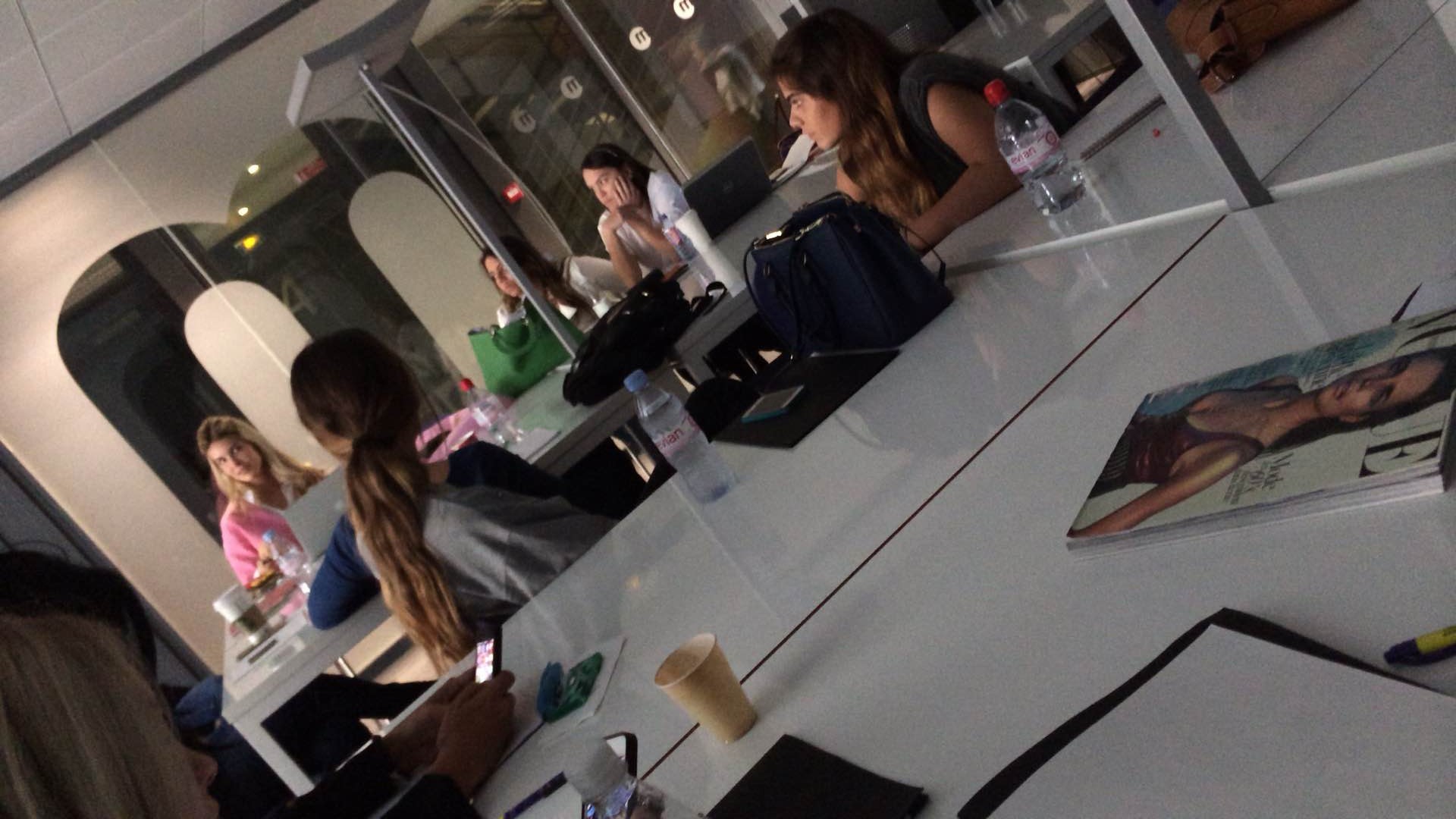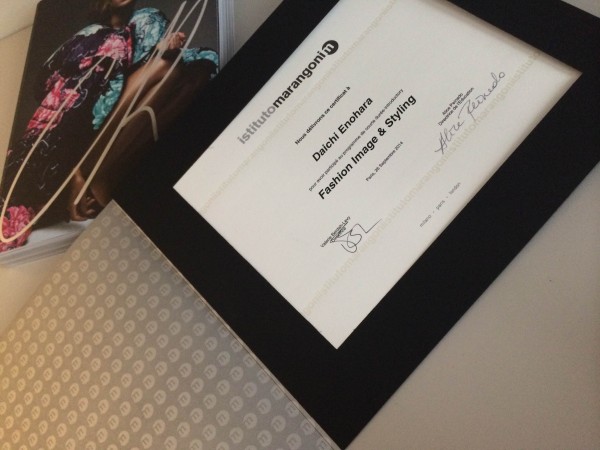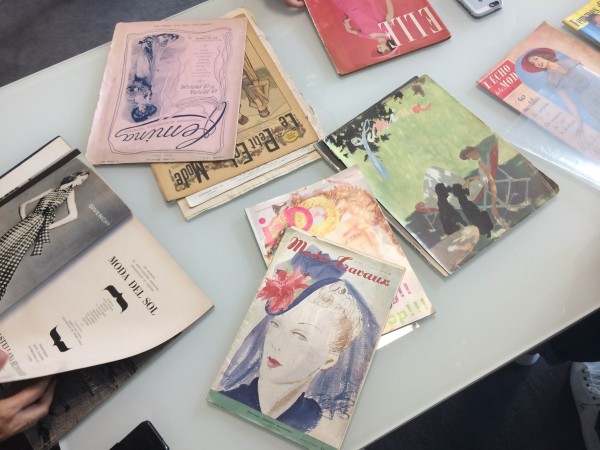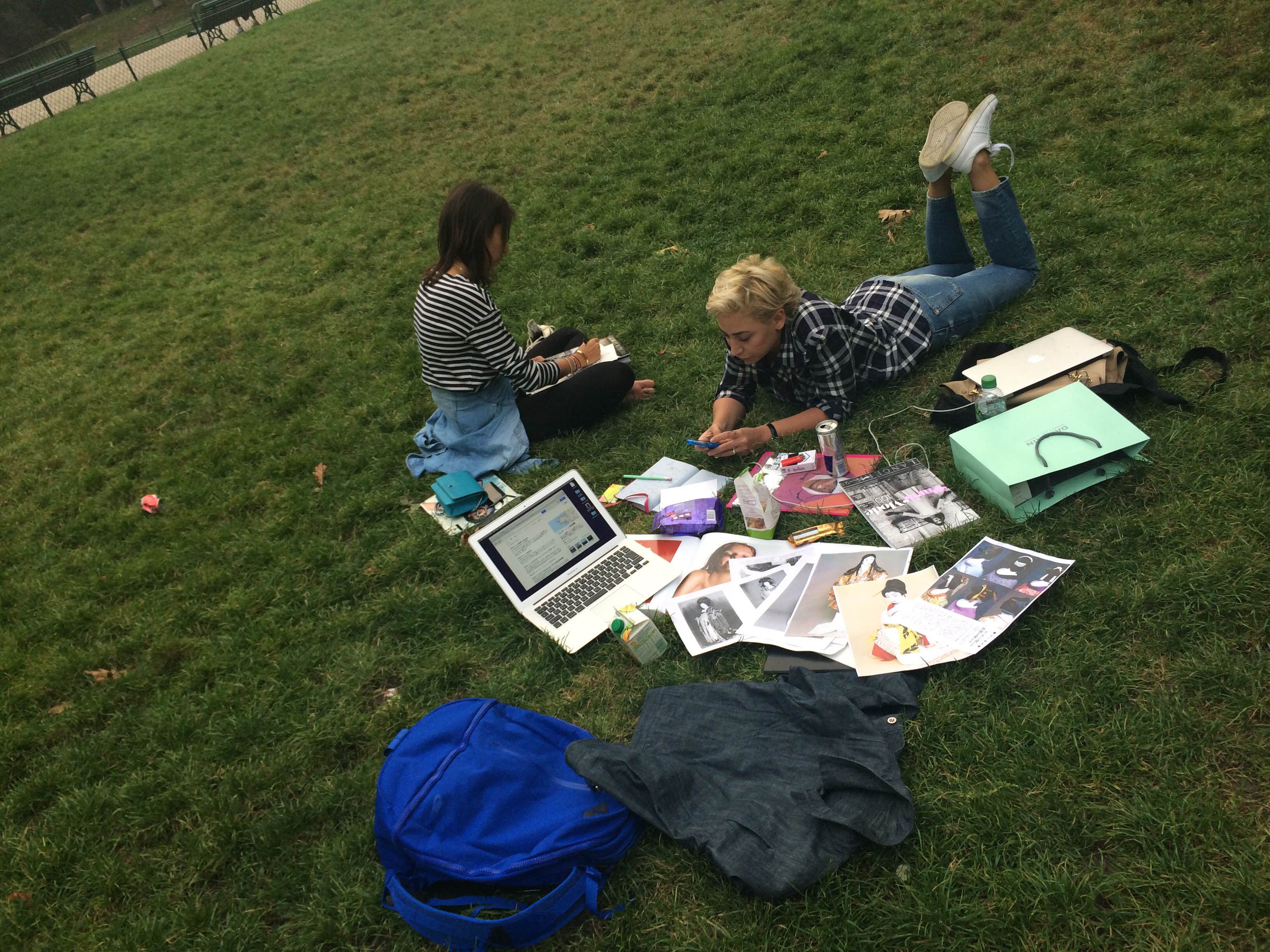Daichi Enohara / “Nyte” Designer
Istituto Marangoni Scholarship – Supported by THE FASHION POST, Tokyo vol.1
2000 - Apprenticed under Manjiro Ichimura at the age of 15, after which he began as a Kabuki actor.
2006 - Debuted as a fashion designer with the announcement of “Night.”
2007 - Began selling women’s clothing at a fashion boutique located in Nakameguro.
2009- Expanded to “XANADU TOKYO,” a fashion boutique that inspires Tokyo’s young creators.
2010 - Changed brand name to "Nyte" and participated in the joint exhibition "CEMENT."
October - Participated in the exhibition trade fair "tokyoeye" held in Paris by the Ministry of Economy, Trade and Industry as Tokyo's representative 'next generation' fashion designer.
October - Participated as the costume designer for photographer Takeshi Hanazawa's "Fantasmagorie2011," exhibited in the International Short Film Festival "ASVOFF" presented by DIANE PERNET.
2013 - Provided costumes for the key visual used at Mercedes-Benz Fashion Week TOKYO 2013-14 A/W.
March, 2014 - Elected as representative of creators leading the next generation, and participated in the guerrilla show "HAPPENING" held at the MBFWT 2014-15 A/W venue.
"Nyte" has many fans and collectors among stylists and those working in the industry, including Carine Roitfeld of America's "Harper's Bazaar" magazine. Currently, "Nyte" is continuing its expansion in many areas, including the domestic expansion of both its Women's and Men's Wear lines, and providing costumes for various media and artists.
[ Twitter ] https://twitter.com/nytet
Istituto Marangoni , the long-established fashion vocational school in Milan, Italy, THE FASHION POST , a fashion & lifestyle journal, and the Japan Fashion Week Organization (JFWO) teamed up to launch the “Istituto Marangoni Scholarship – Supported by THE FASHION POST, Tokyo” project, aimed at fostering and supporting young designers. For this project, in which participants are given the chance to attend a one-month special program held at Istituto Marangoni, Mr. Daichi Enohara of the Tokyo based fashion brand “Nyte” was elected for the first round. Coming from a unique background of being a former Kabuki actor, we took the opportunity to ask Mr. Enohara about his experience at school in Paris and the background for the brand.
Mr. Enohara, can you tell us a little bit about how you got into Kabuki and became an actor?
My father did oil painting as a hobby, and was an art collector. Growing up in an environment constantly surrounded by art, I had the vague desire to somehow express myself. By the time came to graduate from junior high school, I was considering the idea of moving on to study art. However, I somewhat doubted the necessity of ‘learning’ how to express myself. I thought that in order to represent and express myself, I had to put out the ideas that I already had in my head, and that I would learn methods and techniques autonomously through this process.
It was then that I was tempted to take a road which would allow me to proceed quickly to working. I had been taking lessons in traditional Japanese dance since the age of five, and always read a magazine on traditional arts, called “Engekikai.” At the time, Kabuki actor Mr. Manjiro Ichimura was looking for a disciple. I took it as an opportunity and contacted him, entering into the world of Kabuki.
What made you change directions toward becoming a fashion designer?
While working in Kabuki, I mainly played female roles. Thanks to this, I was always observing the movements and thought processes of women. With my mentor having many performances overseas, I was able to learn about women and cultures from other countries. When thinking of differences of Japanese women and women from other countries, I questioned why the women of Japan behave and wear clothing that obscures their natural beauty. In Kabuki, there is a meaning behind everything, from the color and form of the costume and the way it is worn, to the demeanor of the actor. At the same time, it is a world in which there are many conventions and little to no freedom. Despite this, it is still possible to feel the actor’s overflowing personality On the other hand, in terms of clothes with a Western origin, although of course there is no history or foundation for these items in Japan, I thought to myself from an outside perspective that either Japanese women are choosing items that don’t show themselves off, or the only items that exist are the ones which hide their personalities. Japan has its own original history and culture for clothing. I thought that, from these Japanese concepts about clothing, I should be able to produce something, but in order to do so it is necessary to first understand clothing. That was how I got into fashion.
Did you not have an interest in fashion up until that point?
(Laughing) I knew absolutely nothing about fashion. The seven years I spent in Kabuki were almost entirely filled by Japanese clothing, and I had pretty much never read a fashion magazine. I think more than anything I simply wanted to know about the world of fashion. I have been acquaintances with our modelist for about ten years; she was originally a student of the Bunka Fashion College and was interested in Japanese clothing, such as kimonos. Since I was interested in Western style clothing, we would occasionally get together to chat about fashion. Before long, we were able to put small things that we had created on display at a small shop owned by one of her acquaintances. This continued on for about two years, and around the time of the opening of the fashion boutique “XANADU TOKYO” , we expanded the number of styles and rolled out a collection.
Did you have a clear concept for the brand from its initial launch?
I wanted to create a modern style of Japanese clothing. The brand name was derived from the idea of “creating a new Japanese night.” Until the Edo era, it wasn’t a common part of Japan’s culture to go outside after the sun set and enjoy the night. In other words, for a long period of time there was no night-time attire in Japan. I felt that creating modern Japanese clothing also meant creating a new night culture for Japan. For fashion as well, Japan inevitably tends to chase after Western culture, such as Paris. However, Japan certainly has its own history for clothing. Because Japanese body types and the way Japanese people think about clothing are completely different from their Western counterparts, there is no reason to go out of the way to match Western standards. Rather, it is necessary to come up with a unique style of Japanese clothing that can’t be imitated anywhere else. These were my strong perceptions from when I went to Paris in September.
While we’re on the subject of Paris, please tell us a little bit about the Istituto Marangoni one month special program that you participated in this September.
Since I entered the world of Kabuki straight after junior high school graduation, when I first heard of the opportunity, I genuinely felt that “Now, I want to give school a shot.” In the past, I ended up giving Carine Roitfeld, the former editor-in-chief of French Vogue, a present of one of my pieces after she showed a strong interest in it. I chose Paris with the thought of going to see her. Of course, the feeling of wanting to learn in the epicenter of “mode” fashion was my greatest deciding factor.
What types of courses did you take at Marangoni?
The program I took this time consisted mainly of lectures regarding fashion image and styling courses, focusing on the history of fashion and methods for launching brand visuals. The class included about sixteen students from various countries and backgrounds, ranging from stylists and editors to people with no professional experience at all, coming from places such as America, Mexico, Spain, Brazil, and Saudi Arabia.
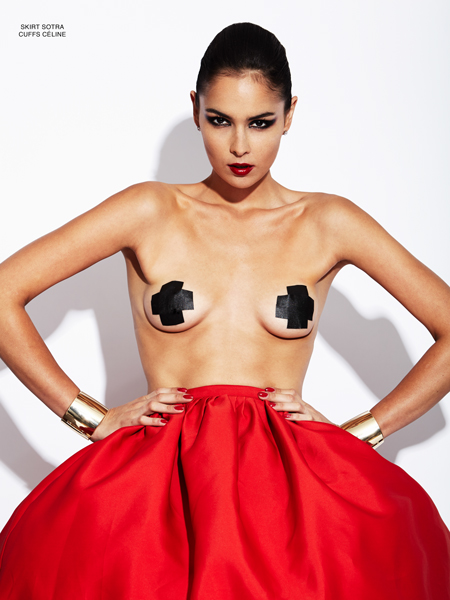
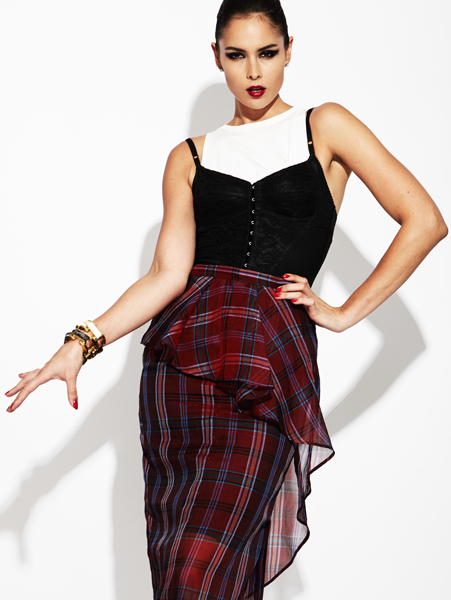
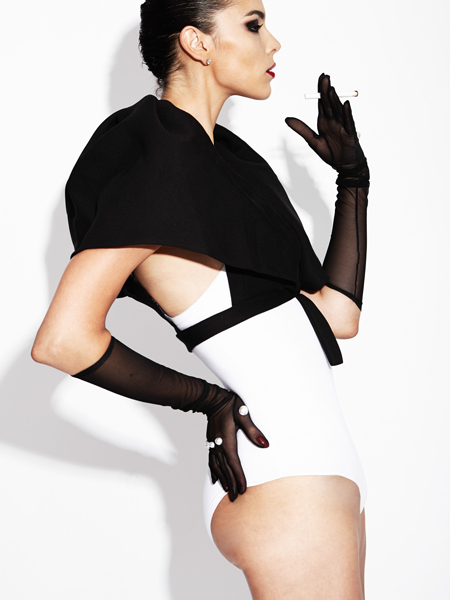
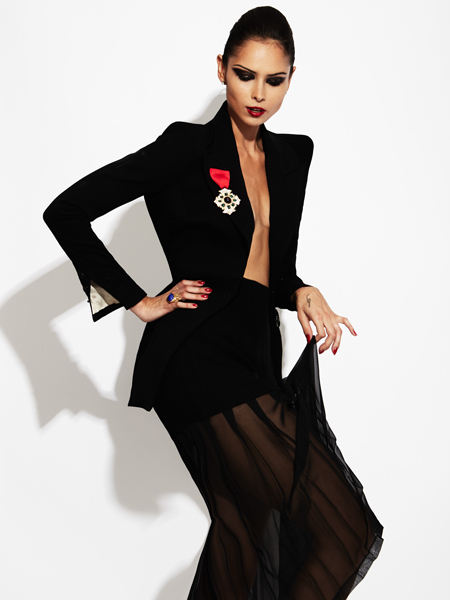 Works were produced by groups made up of three to four students. The theme for Mr. Enohara’s group was “1980’s / HIV positive.” Black, red, and white were used for the color pallet to invoke an image of Geisha.
Works were produced by groups made up of three to four students. The theme for Mr. Enohara’s group was “1980’s / HIV positive.” Black, red, and white were used for the color pallet to invoke an image of Geisha.What language were lectures held in?
English. Although I can’t speak English, people do what they have to when they are forced to. (Laughing) I had told my closest classmate beforehand that my English wasn’t that great, so they helped to support me in various ways. Additionally, because it was our job to do everything from styling to photography, all the way to set-up in a magazine (a fictional media production), it was quite difficult to convey detailed nuances.
What impression did you have about learning about fashion for a set time period in an overseas environment?
Actually going abroad allows you to see and learn about things that you didn’t imagine at all, outside of technical aspects. I think that going abroad was an extremely beneficial experience.
More than anything else, I think it was beneficial to be able to experience first-hand the fact that peoples’ ideas toward clothing differ completely depending on their country and background.
For example, people from Western cultures tend to go about creating things by thinking about design first. On the other hand, although this isn’t always the case, Japan tends to think about clothing starting from price and material. I felt that this was a crucial difference. Also, I came away with the impression that the delineation of occupations is surprisingly clear.
Were you able to make it to Paris Fashion Week?
I did not make it to the show. Basically, I feel that whether it be Paris or Japan, there is no difference in the things that are made. However, because I feel strongly about wanting to inherit Japan’s culture and traditions, I would like to show off my ideas by going abroad.
Lastly, please let us know about any goals or prospects for the brand.
The brand concept itself will never change; I believe more than anything that continuing on is important. This is because the longer you continue working in design, the larger the responsibility becomes. I believe that designer is an occupation of creating something from nothing, and showing exactly how far you can take it. Simply expressing yourself is not enough. Personally, I feel strongly that rather than change Japan’s culture, I want to protect it in a new way. Therefore, I believe that all Japanese fashion should be assessed on a completely different scale from that of Western fashion. It is for this reason as well that I am working to make the Japan and Tokyo fashion scene a single large presence globally.


